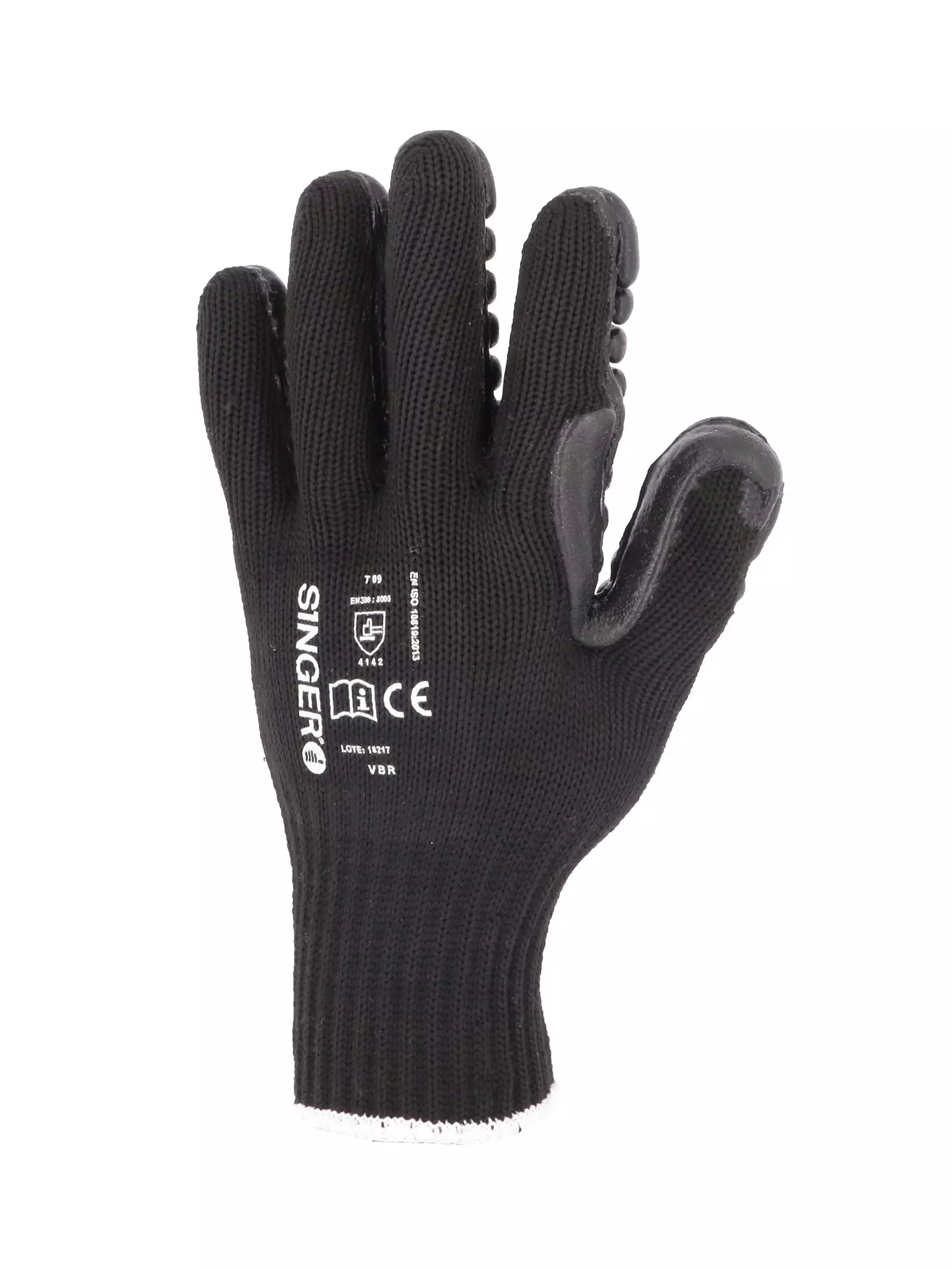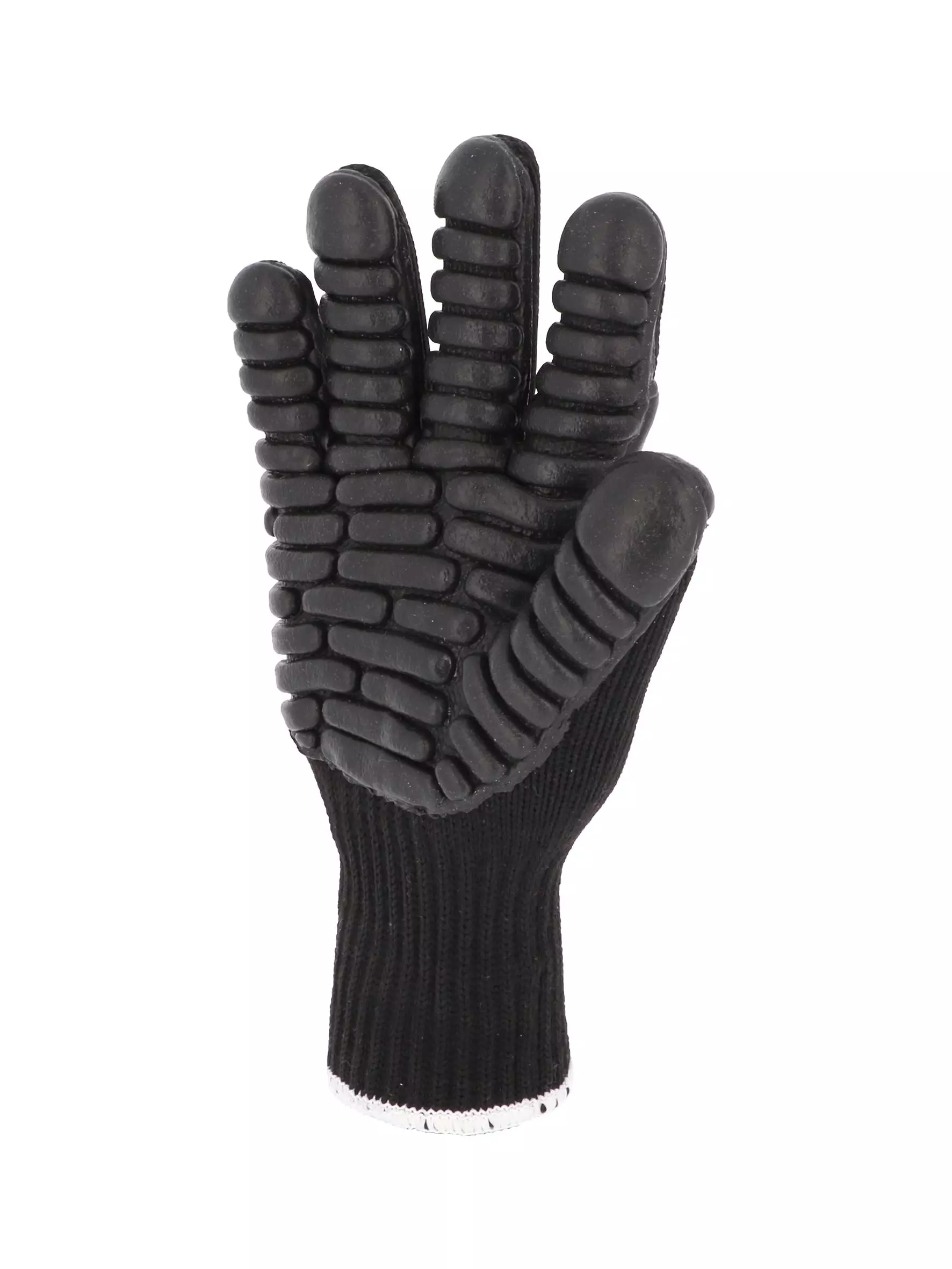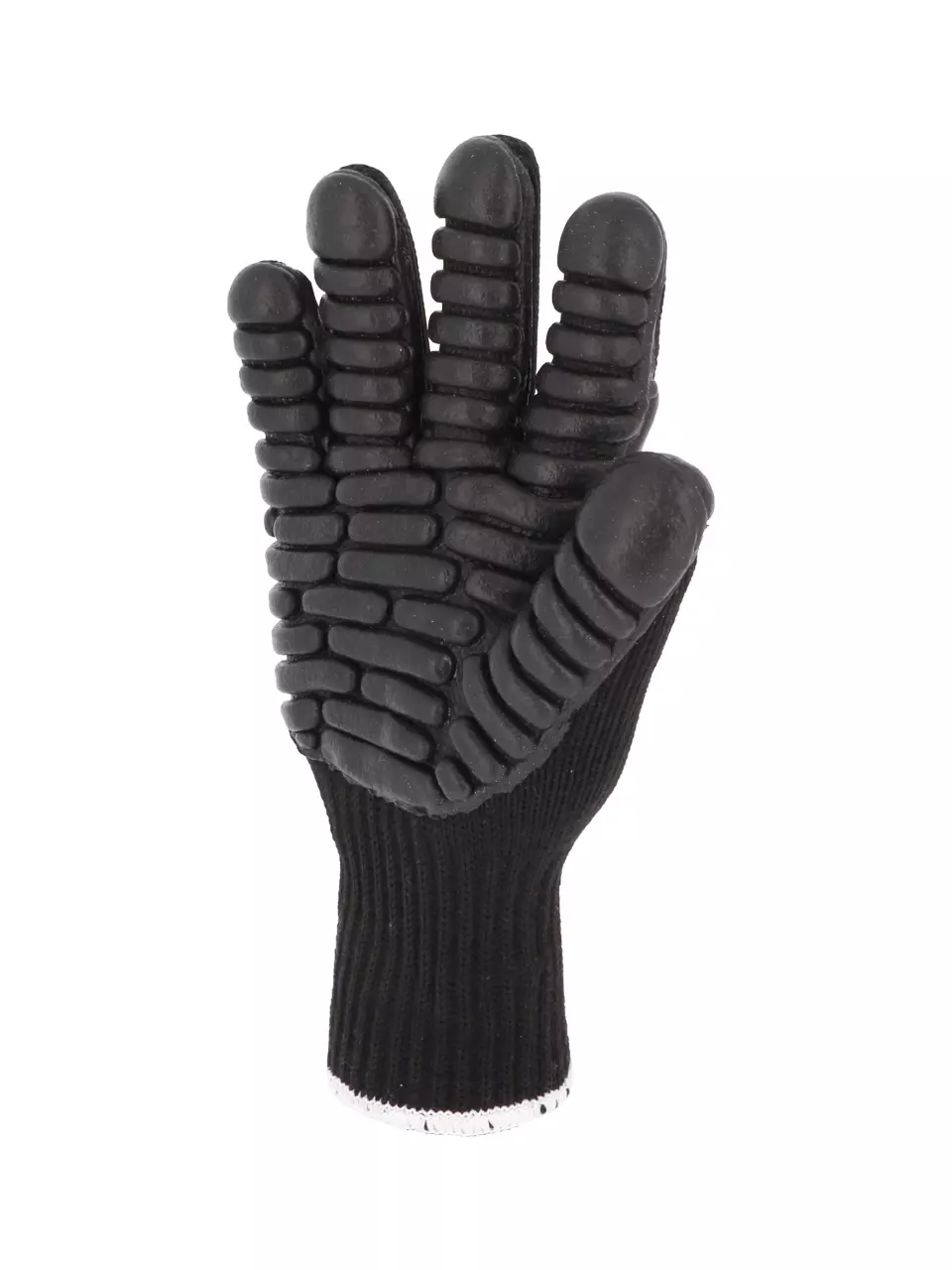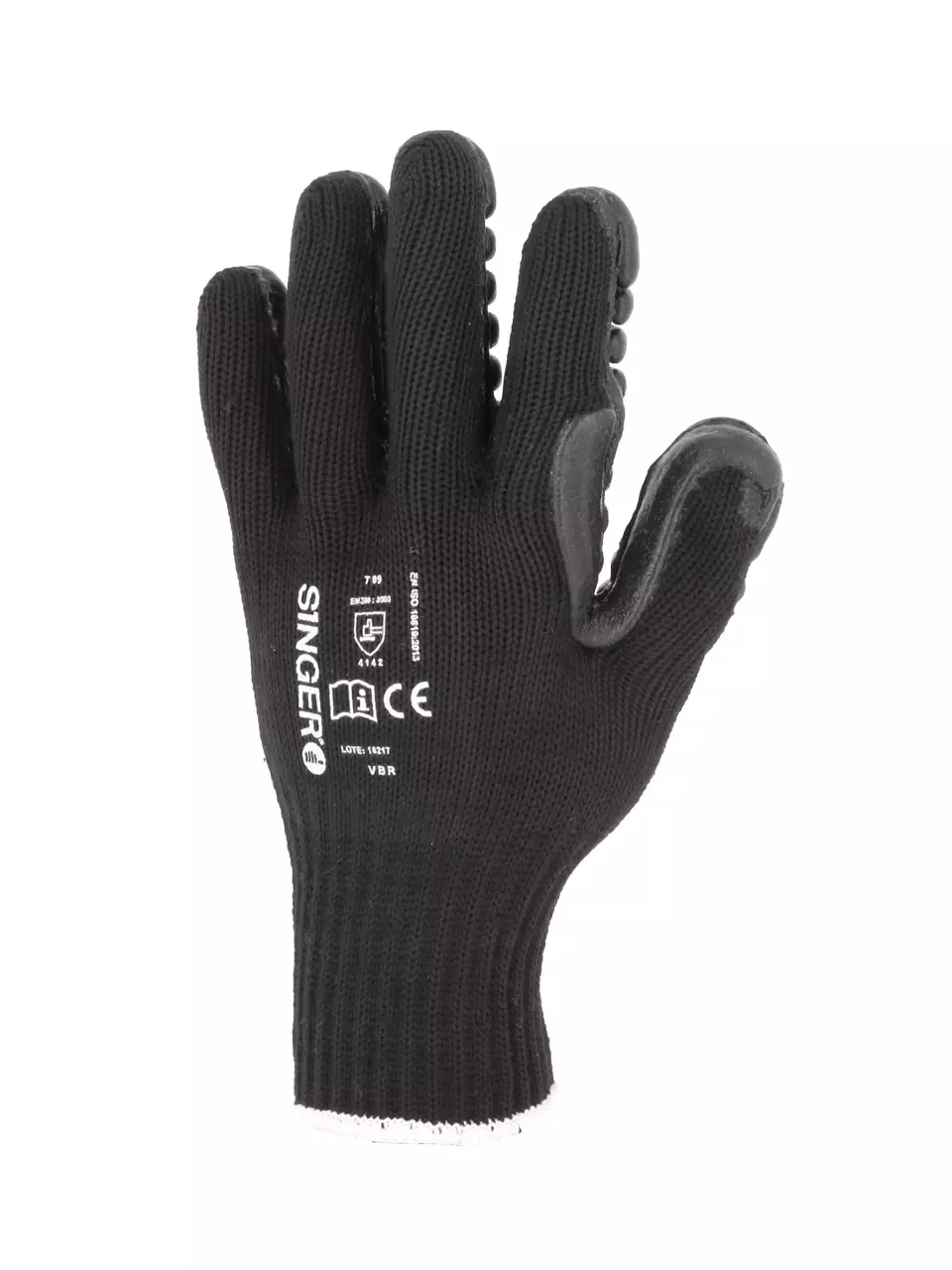

Features You'll Love

Coating Material · Natural Rubber, Foam
Palm Material · Natural Rubber, Foam

Cuff Style · Knit
A snug knit cuff comfortably seals out debris and keeps your gloves securely in place, ensuring a comfortable and protected fit.

EN 388 · Tear Resistance Level 4, Puncture Resistance Level 2, Cut Resistance, ISO 13997 Level B, Abrasion Resistance Level 4
Offers the highest level of protection against tearing, withstanding a strong force before ripping.
Withstands moderate force from sharp objects like heavy-duty splinters or wires.
Offers low cut protection for general work, such as packaging and light assembly.
Offers the highest level of protection against intense rubbing and wear from rough materials.
Singer Safety
Vibration Resistant Gloves, Black, 5 pairs
Vibration Resistant Gloves, Black, 5 pairs
4.7 / 5
615,56 kr
Price per 5 pairs
123,11 kr / pair
Choose size
Free delivery
Features You'll Love

Coating Material · Natural Rubber, Foam
Palm Material · Natural Rubber, Foam

Cuff Style · Knit
A snug knit cuff comfortably seals out debris and keeps your gloves securely in place, ensuring a comfortable and protected fit.

EN 388 · Tear Resistance Level 4, Puncture Resistance Level 2, Cut Resistance, ISO 13997 Level B, Abrasion Resistance Level 4
Offers the highest level of protection against tearing, withstanding a strong force before ripping.
Withstands moderate force from sharp objects like heavy-duty splinters or wires.
Offers low cut protection for general work, such as packaging and light assembly.
Offers the highest level of protection against intense rubbing and wear from rough materials.
Product description
These specialized anti-vibration gloves feature a unique rubber foam coating on the palm designed to reduce vibration transmission during use of power tools and equipment. The seamless knitted polyester liner provides comfort and durability, while the elastic knitted wrist with piping ensures a secure fit. Certified to EN ISO 10819 standards for vibration protection and EN 388:2016+A1:2018 (4142B) for mechanical risks, these gloves offer comprehensive protection for demanding industrial applications.
Product Features:
- Seamless knitted construction for enhanced comfort and elimination of pressure points
- Rubber foam blocks on palm for effective vibration reduction
- Ventilated back design for improved hand breathability
- Non-irritating and easy to adjust polyester liner
- Elastic knitted wrist for secure fit and support
Technical Details:
- Gauge 7 polyester liner for durability
- Palm-only coating provides anti-slip functionality
- Reinforced strength with polyester construction
- Compliant with EN ISO 21420:2020 general requirements
- Mechanical protection rating: 4142B (abrasion, cut, tear, puncture, and cut resistance)
Recommended Applications:
- Public works
- Building and construction
- Finishing operations
- Applications involving vibrating tools and equipment
Standards:
- EN ISO 10819:2013+A1:2019 for vibration protection
- EN 388:2016+A1:2018 (4142B) for mechanical risks
- European Regulation (EU) 2016/425 on PPE, Category II
- ISO 9001 certified manufacturing
EAN: 3660514206304, 3660514206311, 3660514206335, 3660514206342